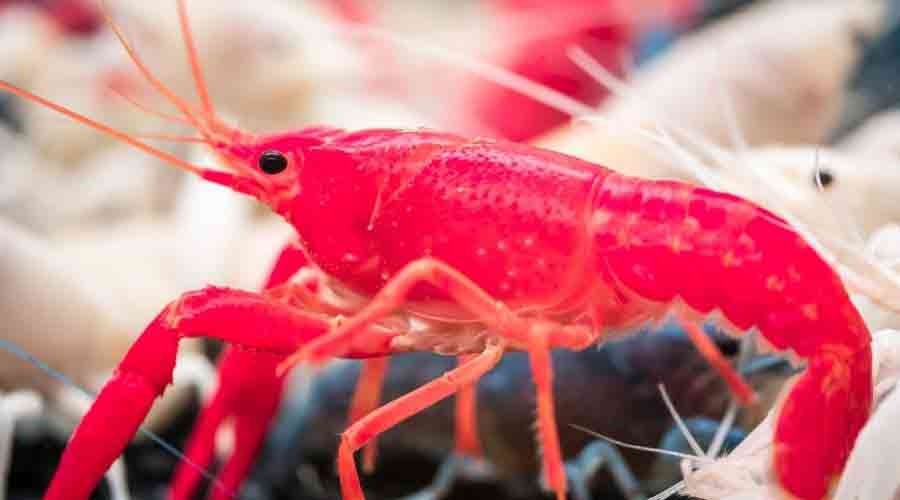In this blog, I’ll answer the question of how do you set up a crayfish tank. I’ll go into detail on how to ensure that your crayfish tank is set up perfectly. This is an important part of crayfish care and will also be crucial if you decide to keep other freshwater fish with your pet crayfish.
Let’s take a look.
How Do You Set Up a Crayfish Tank: A Step-by-Step Guide
Below are several steps that will outline everything you should do to get your crayfish tank set up correctly. Everything from selecting the right tank, to placing the tank in the correct spot, to cycling the water. These steps will be key in getting your tank ready for your crayfish and will also be crucial in setting up a tank that can sustain a healthy environment for not only your crayfish but other freshwater fish should you get them.
Overview of Setting up a Crayfish Tank
- Selecting the right tank
- Fish tank kits
- Placing the tank in the right location
- Adding the substrate
- Selecting and placing the proper ornaments for your crayfish
- Adding hideouts
- Plants and crayfish?
- Conditioning the water
- Cycling the fish tank
- Hardy fish for cycling your tank
- Doing regular water changes
- Cycling your tank fast
- Adding your crayfish
- Adding other fish
- The best tank mates for crayfish
- Recap
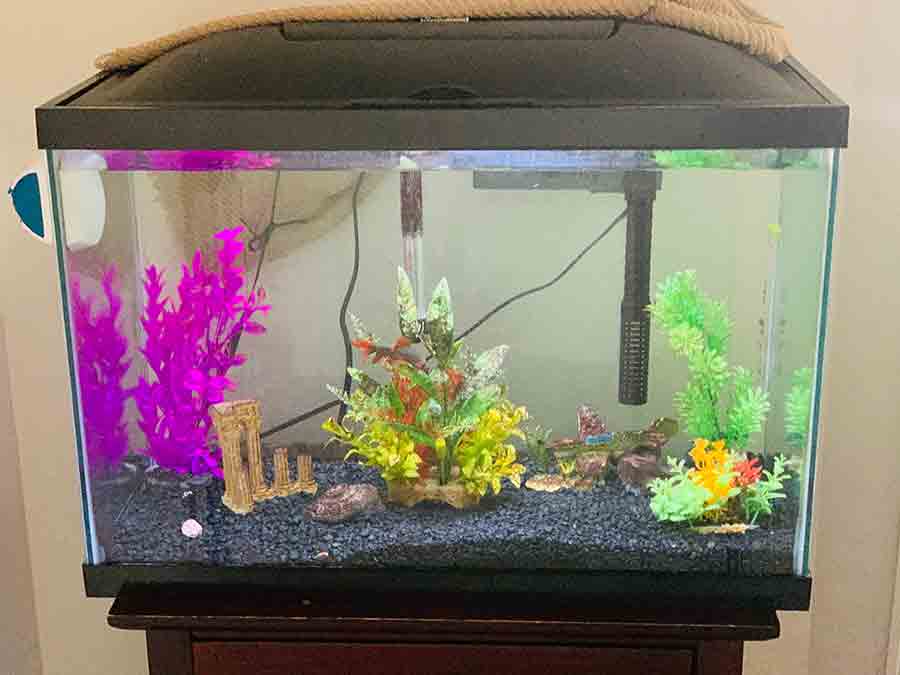
Step 1: Select the Correct Aquarium for Your Crayfish Tank
This is, of course, the biggest step, getting a tank. If you are a beginner, I would always suggest getting a fish tank kit. Kits usually come with literally everything you need to get started. If you have kept fish before, then you can pick out any tank and shop for the tank accessories separately.
Fish Tank Kits Include:
- The aquarium of course.
- A cover with an LED light.
- A heater.
- A pump and water filter.
- A skimming net.
- A bag of fish food.
- Water conditioner (Needed to make tap water safe for crayfish and fish.)
When selecting the best tank for your pet crayfish, you’ll want to take a few things into consideration. There are some things you need to think about for down the road.
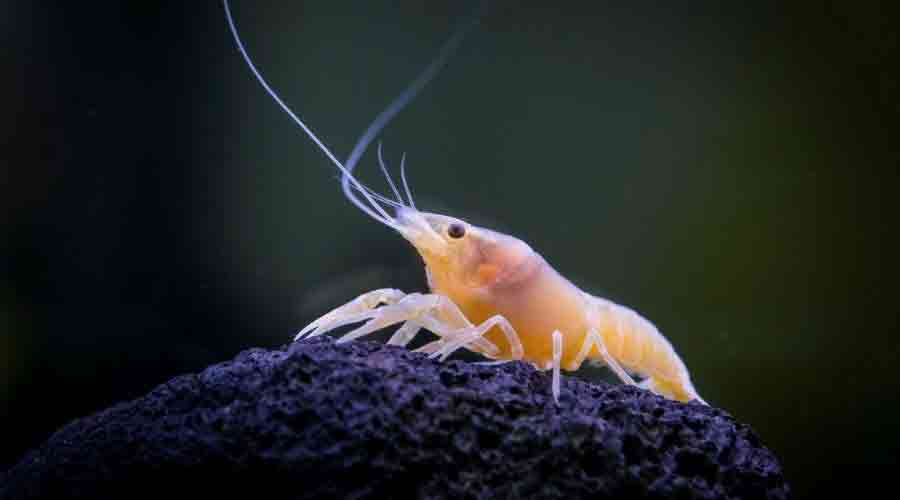
For example, Will you be adding other freshwater fish to your tank at some point?
Will you be adding other crayfish to your tank?
How much money do you want to spend?
Personally, I suggest at least a 20-gallon fish tank kit for one crayfish and a 55-gallon aquarium kit if you plan on adding lots of other fish or another crayfish.
Let me make this clear, two crayfish can’t just always live in one tank together unless the tank size is substantial and there are plenty of hideouts. They will fight and potentially kill each other if not given enough space and the proper amount of hideouts. I know this for a fact from personal experience. With that said, Mexican dwarf crayfish do have a better temperament than most other crayfish and can do well in community tanks.
Below are the tanks that I highly recommend. I’ve used both of them myself.
Step 2: Place the Tank in the Correct Spot
This is simple. Don’t put your crayfish tank directly in the path of sunlight. Sunlight will promote the growth of algae, and once this gets out of control, it can be a nightmare to get rid of. But, here’s a guide to algae that might be helpful down the road.
Step 3: Add Your Substrate
For crayfish, personally, I use fine sand or small gravel. And with blue crayfish, black-colored sand or gravel really makes their colors stand out.
Step 4: Add Tank Accessories
This is the fun part. In this step, you can add your ornaments to your tank. I have a crashed airplane as one of my ornaments and a “moai” figure from Easter Island. Pretty sweet huh? But, you can also add rocks, driftwood, etc.
Add Hideouts
You’ll also want to add a hideout or two for your crayfish. Crayfish need hideouts because they like to burrow. Also, during molting, crayfish become very weak and vulnerable, so they need a place to hide so they aren’t attacked.
A hideout can be something as simple as a piece of PVC or a hollowed-out ornament you find at your local pet store. There are tons to choose from, and many different themes.
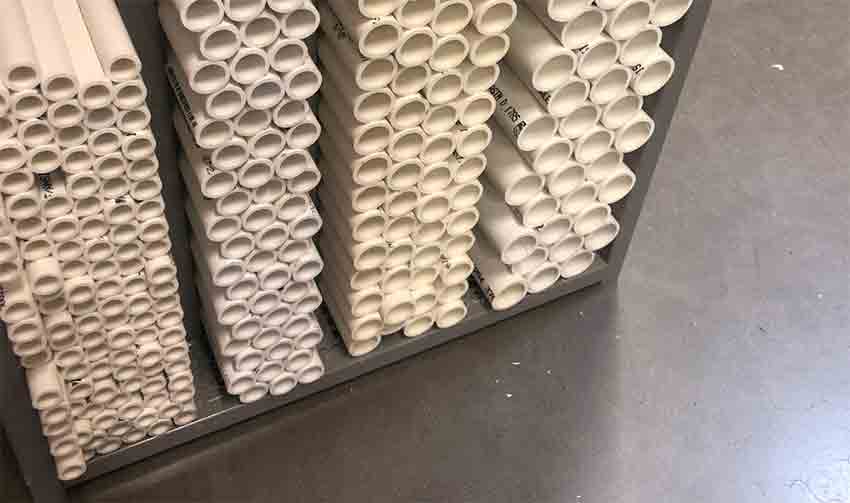
Plants and Crayfish
Many aquarists and crayfish keepers have differing opinions about keeping plants in a crayfish tank. Although some crayfish keepers can successfully keep crayfish in planted tanks, my experience has been that crayfish will at some point have their way with your plants (tear them apart). So personally, I recommend not using real plants in your tank, unless you don’t mind crayfish tearing them up.
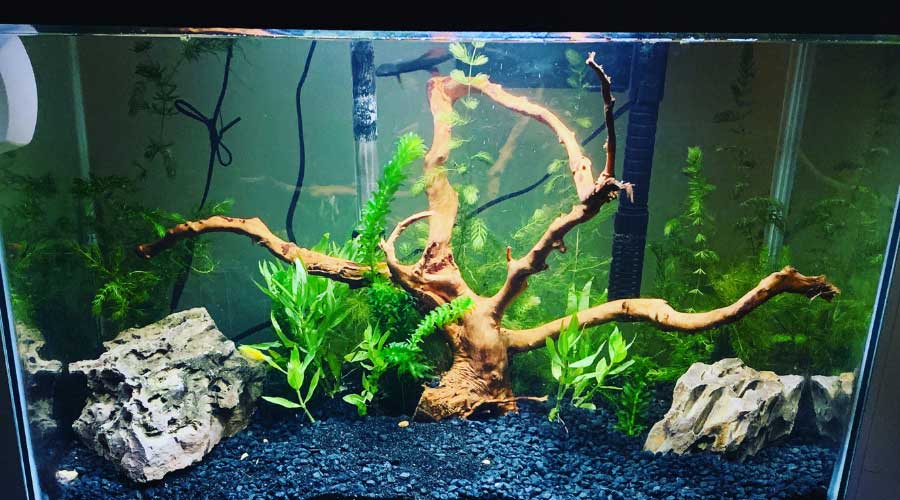
An exception to this is with dwarf crayfish. I keep a Mexican dwarf crayfish in one of my 20-gallon tanks with plants. These types of crayfish are still crayfish, but overall less aggressive, better for community tanks, and do well in planted tanks, based on my experience anyway.
Step 5: Condition the Water
This step is pretty easy. Basically, it involves adding a “water conditioner” to the water that will go into your tank. The water conditioner simply neutralizes the chlorine and makes the water safe for your fish.
A water conditioner is cheap and can be bought at almost any pet store that carries fish tank accessories. But most likely, the water conditioner will come with any fish tank kit.
Step 6: Cycle the Tank
Cycling the aquarium is one of the most important steps when you set up your crayfish tank. Wait, actually, it is the most important part. And, if you don’t do it correctly, your crayfish, aka “cray,” and other fish could die.
In short, crayfish and fish put out a lot of waste, especially crayfish. They do this when they pee and poop. When they pee and poop, it creates nitrites which lead to ammonia. And, ammonia is toxic for your aquatic life.
In order to make your tank safe for your pet crayfish and your fish, you have to enable the tank to establish a “nitrogen cycle.” This cycle establishes beneficial bacteria in the tank which makes the tank and its water safe for the fish and crayfish to live in.
Cycling is this simple, and although there are several methods, this is one I have used in the past. Although now, I cycle my tanks faster with a different method. But more on that in a minute.
After allowing your tank with water to sit for a few days with the filter running, buy a couple of hardy fish, meaning fish that can live in less than ideal water conditions. Below are a few to choose from.
Hardy Fish for Cycling Your Tank
- Danios
- Neon tetras
- Guppies
- Tiger Barbs
- White Clouds
After placing them in the tank, you’ll want to feed your fish small amounts of food every couple of days. Remember, if you feed them too much their poop will produce too many toxins. Also if you feed them too much food, the leftover food will rot and have the same result.
While you are doing this, be sure, and change 10 to 25% of the water every couple of days.
You are also going to need to buy a water testing kit. One may come with your fish tank, actually. Test your water regularly to ensure that your nitrites, nitrates, pH, and other levels are where they need to be.
For a crayfish, you want your pH to be about 7 and the water temperature to be between 70 to 75 degrees, roughly.
Do Regular Water Changes
Also, remember that crayfish are dirty and put out a lot of waste. And, if you have other fish in your tank, well things are going to get even messier. So, I recommend changing 20 to 25% of your water every week. Now, keep in mind, the frequency of water changes and the amount of water changed can vary because of variables like tank size, other fish in the tank, feeding schedule, etc. In short, make sure you do regular water changes.
Cycle Your Tank Faster
If you want to jump-start the cycling process and learn how I cycle my tanks in just eight days, check out this blog on how to cycle your tank faster. It makes cycling a tank much easier and much faster.
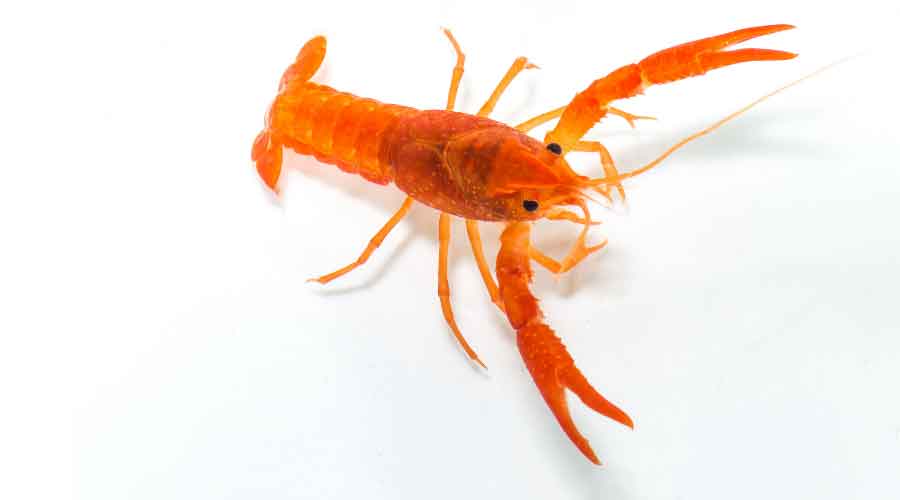
Step 7: Add Your Crayfish
This is the step where you’ll want to buy your crayfish. I recommend a blue crayfish, but that’s just my personal choice. There are also white crayfish, tangerine crayfish, and others.
When you bring your crayfish home, don’t just throw him in the tank though. This will shock the little guy or gal.
Usually, the store will place him in a plastic bag full of water. Set the whole bag in the water so that the crayfish can adjust to the temperature of the water in your tank.
After about 15 minutes, add small amounts of your tank water into the bag so that your crayfish can get acclimated. After about 25 minutes total (rough estimate), you can release your new guy into the tank.
Step 8: Add Other Fish
If you decide to add other freshwater fish to your tank, make sure you select the right ones. If you don’t, there is a very good chance they could end up becoming crayfish food.
Fish that don’t work well in a tank with crayfish are slow swimming fish and fish that swim near the bottom of the tank. These types of fish usually end up in the claws of pet crayfish. That doesn’t seem like a great way to go, does it?
So, in general, what you want are fast-swimming fish and/or fish that swim in the middle to top of the fish tank.
I’d recommend any of the fish below as tank mates:
- Danios
- Tiger Barbs
- Tetras
- Rosy red minnows
- Hatcehtfish
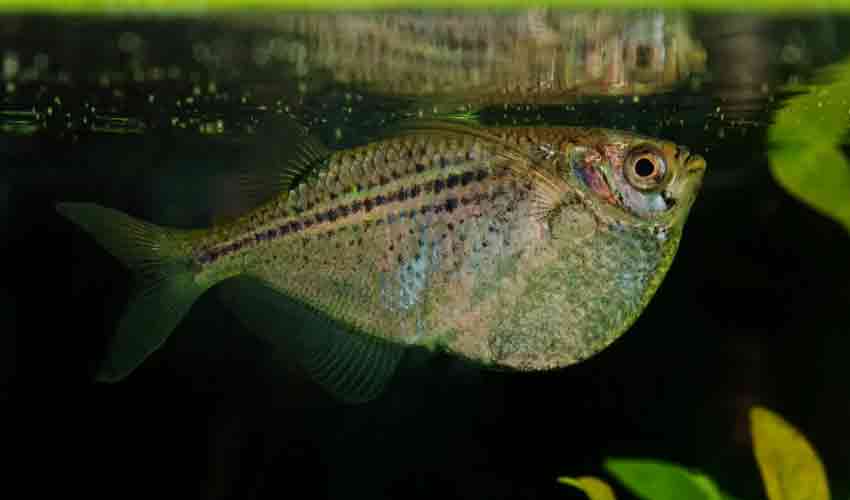
To recap, remember to select a fish tank specific to your needs. For crayfish, you will want to think about the size of your tank. I’d suggest no smaller than a 20-gallon fish tank. Because with a 20-gallon fish tank, you will have more room to work with. And when setting up your crayfish tank, consider things like other fish, other crayfish, and price.
Think about where you will put your tank in your house. Sunlight shining directly on your tank won’t be a good thing and will lead to an overgrowth of algae.
Remember to buy tank accessories including a hideout or two for your crayfish. Not only do crayfish like to burrow, but they need to hide when they molt because they are most vulnerable right after molting.
Not only do you need to condition the water in your new tank, and every time you add water, but you absolutely must cycle your tank if you want your crayfish and other fish to survive.
Additionally, always remember to acclimate your crayfish to the temperature of your tank’s water before turning it loose.
And finally, be sure you select the right fish to place in the tank with your crayfish. Otherwise, they’re toast.

